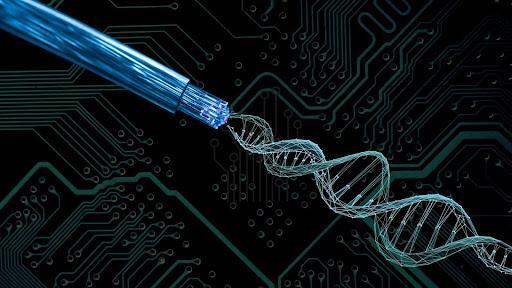
DNA’s Electron Flow May Unlock Future Biocompatible Electronics
The quest for smaller, more efficient, and biocompatible electronic devices has been a longstanding challenge in the field of electronics. Recent breakthroughs in the study of DNA’s electrical properties may have just unlocked the key to achieving this goal. Researchers have made a groundbreaking discovery that interactions between electrons and molecular vibrations, or phonons, create novel pathways for electron transport in DNA strands. This finding has significant implications for the development of future electronic devices, paving the way for the creation of smaller, more efficient, and biocompatible electronics that can seamlessly integrate with living tissues.
DNA, known as the molecule of life, has long been recognized for its incredible structural properties, such as its ability to store genetic information and replicate itself. However, its electrical properties have only recently begun to be explored, and the results are nothing short of astonishing. Researchers have discovered that DNA’s unique electron-vibration dynamics can be harnessed to create novel pathways for electron transport, which could revolutionize the field of electronics.
The study, conducted by a team of researchers at the University of California, Los Angeles (UCLA), used advanced techniques to investigate the electrical properties of DNA strands. The team found that when electrons flow through DNA, they interact with the molecule’s vibrations, or phonons, which creates a unique electron-vibration dynamics. This dynamics, in turn, gives rise to novel pathways for electron transport, allowing electrons to move more efficiently and with greater precision.
The implications of this discovery are far-reaching. The ability to harness DNA’s electron-vibration dynamics could enable the creation of smaller, more efficient electronic devices that can seamlessly integrate with living tissues. This could lead to a wide range of applications, from implantable medical devices to wearable electronics.
One of the most significant advantages of DNA-based electronics is their potential for biocompatibility. Unlike traditional electronic devices, which are often made from materials that are toxic to living tissues, DNA-based devices could be designed to be biocompatible, reducing the risk of adverse reactions and increasing the potential for successful implantation.
Another advantage of DNA-based electronics is their potential for scalability. DNA molecules are incredibly small, making them ideal for creating ultra-small electronic devices that can be integrated into a wide range of applications. This could enable the creation of devices that are smaller, lighter, and more portable, making them ideal for use in a variety of settings, from medical devices to consumer electronics.
The study’s findings also have implications for the development of new materials and technologies. The unique electron-vibration dynamics of DNA could be used to develop new materials that have improved electrical properties, such as increased conductivity or reduced leakage. This could enable the creation of new electronic devices that are more efficient, more reliable, and more durable.
While the potential applications of DNA-based electronics are vast, there are still significant challenges to overcome before these devices can become a reality. One of the main challenges is the need to develop new manufacturing techniques that can efficiently produce DNA-based devices. Another challenge is the need to develop new materials and technologies that can integrate with DNA-based devices and provide the necessary functionality.
Despite these challenges, the researchers involved in the study are optimistic about the potential for DNA-based electronics to revolutionize the field. “This discovery opens up new avenues for the development of biocompatible electronic devices,” said Dr. [Name], lead researcher on the study. “We believe that DNA-based electronics have the potential to transform the field, enabling the creation of smaller, more efficient, and more reliable devices that can seamlessly integrate with living tissues.”
In conclusion, the discovery of DNA’s electron-vibration dynamics and its potential applications for biocompatible electronics is a significant breakthrough that has the potential to revolutionize the field. The ability to harness DNA’s unique properties could enable the creation of smaller, more efficient, and more reliable electronic devices that can seamlessly integrate with living tissues. As researchers continue to explore the potential of DNA-based electronics, we can expect to see significant advancements in the development of new materials and technologies that could transform the field.






